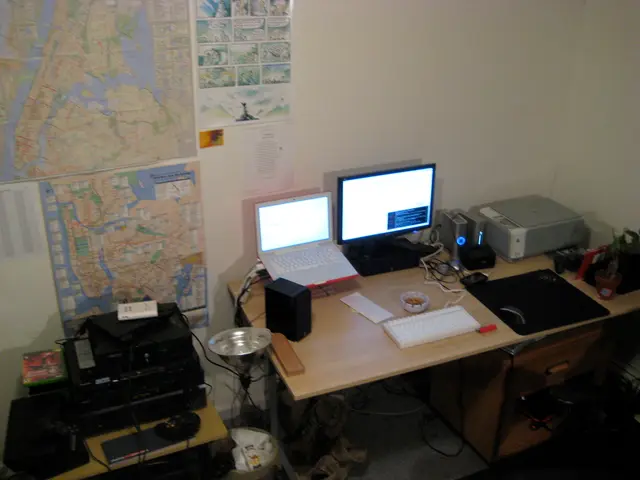Threat to Justice Integrity: Deepfakes, Evidence Forgery, and the Peril of Altered Evidence in Legal Procedures
In the digital age, AI is a double-edged sword. It holds the promise of breakthroughs in efficiency, data analysis, and predictive modeling, yet concerns are mounting over its darker potential in the realm of criminal justice. One of the loudest warnings comes from veteran defense attorney Jerry Buting, who gained attention as a defense lawyer in the Making a Murderer Netflix series. Buting is alarmed by AI's potential threat to justice, particularly as deepfake technologies advance rapidly.
What are Deepfakes?
Deepfakes are super realistic, but entirely fabricated, videos, images, or audio recordings generated by AI. With enough data and computing power, AI can generate:
- Video footage showing people doing things they never did
- Audio recordings mimicking a person's voice with eerie accuracy
- Still images placing individuals in compromising or false contexts
Examples of Deepfake Dangers:
- A CCTV video altered to place a suspect at a crime scene
- A fake confession that never happened
- Witness testimony generated from voice and image synthesis
Traditionally, public trust in visual and auditory evidence has been high. These faked pieces of evidence could lead to wrongful convictions if not scrutinized by forensic experts.
Jerry Buting's Warning: A System Under Threat
Speaking at legal forums and public engagements, Buting warns that the legal system, which relies on physical evidence, human witnesses, and cross-examination, may not be prepared to handle AI-generated deception.
"It used to be, if there was video evidence, that was the gold standard. Now, we have to ask, 'Is this real?'" - Jerry Buting
Buting's concerns come from increasing examples where deepfakes are being used for political misinformation, cyber scams, and framing individuals in fabricated acts.
Real-World Implications for Courts
The Role of Video Evidence in Criminal Trials
Video surveillance, once considered definitive proof, is now in question. How can juries distinguish between real and AI-generated evidence without expert analysis?
Challenges for Judges and Juries:
- Authentication Difficulties: Determining the origin and integrity of digital files
- Expert Reliance: Courts will increasingly need forensic AI analysts
- Jury Perception: Jurors may be misled by visually persuasive but fake media
Case Precedent:
Although no U.S. criminal case has revolved around deepfake evidence, civil cases involving manipulated media have already entered the courts. The time is near when such fake evidence will be introduced in criminal proceedings, either maliciously or mistakenly.
International Concerns: A Global Legal Problem
Courts in India, the UK, Canada, and the EU are grappling with the challenge of authenticating digital content.
Global Deepfake Incidents:
- In the UK, deepfake pornographic videos have been used in blackmail cases
- In India, AI-generated political speeches have caused election scandals
- In Ukraine, a deepfake video of President Zelenskyy falsely claiming surrender was circulated online
These examples highlight the need for global legal frameworks to detect and respond to AI-generated deception.
AI in Law Enforcement: A Double-Edged Sword
While AI threatens justice when misused, it also offers potential tools to uphold it:
Positive Uses of AI in Legal Systems:
- Predictive policing (even though controversial due to bias)
- AI-based forensic tools to verify media authenticity
- Digital case management and evidence indexing
However, the benefits are overshadowed if the AI tools themselves become vectors of falsehood.
The Ethics of AI in Evidence Handling
Ethical concerns are escalating:
- Should AI-generated evidence be admissible at all?
- Who certifies a video's authenticity - the state or independent experts?
- How should courts handle chain-of-custody for digital assets that can be manipulated?
Organizations like the Electronic Frontier Foundation (EFF) and the ACLU have called for clear regulatory frameworks to govern the use of AI in criminal and civil trials.
Solutions and Safeguards: Building a Resilient Justice System
1. Digital Forensics Training
Law enforcement, judges, and lawyers must be trained to recognize signs of deepfakes, request metadata and forensic analysis, and challenge suspect content in court.
2. AI-Based Detection Tools
Ironically, AI can help detect other AI. Tools like Microsoft's Video Authenticator and Deepware Scanner analyze pixel-level inconsistencies, frame artifacts, and audio anomalies to spot deepfakes.
3. Legal Standards for Digital Evidence
Governments must adopt clear standards for chain-of-custody for digital media, digital watermarking and authentication, and expert testimony protocols.
4. Public Awareness Campaigns
Educating jurors and the public about the existence and realism of deepfakes is crucial. Blind trust in video and audio is no longer safe.
Looking Ahead: The AI-Era Justice System
The convergence of law and technology is urgent. As deepfake technology becomes accessible to the public, it could democratize deception, threatening not just high-profile criminal trials, but also civil disputes, elections, and public trust in democratic institutions.
Buting's warning is a wake-up call. The legal community must adapt, collaborate with AI researchers, and evolve rules of evidence to fit the AI era to ensure that AI serves justice rather than subverts it.
The age of synthetic media is here. The question is-will our legal systems be ready?
Further Reading
For a deeper understanding of AI's impact and associated challenges, explore these articles:
- How AI is Bad for Society: The Risks and Threats
- The Cons of AI in Healthcare: Risks and Challenges
- Google AI Co-Scientist for Scientific Discovery
- Examples of AI Gone Wrong: Shocking AI Failures
- Google AI Co-Scientist for Scientific Discovery
- Jerry Buting, a renowned defense attorney known for his work in the Making a Murderer case, has been sounding the alarm about the potential threat of AI, particularly deepfake technologies, to the justice system.
- As deepfakes become more sophisticated, they have the potential to be used maliciously in the realms of crime and justice, such as tampering with CCTV footage or generating fake confessions.
- The legal system, which heavily relies on physical evidence and human witnesses, may struggle to handle AI-generated deception without proper forensic experts and ethical guidelines in place.








